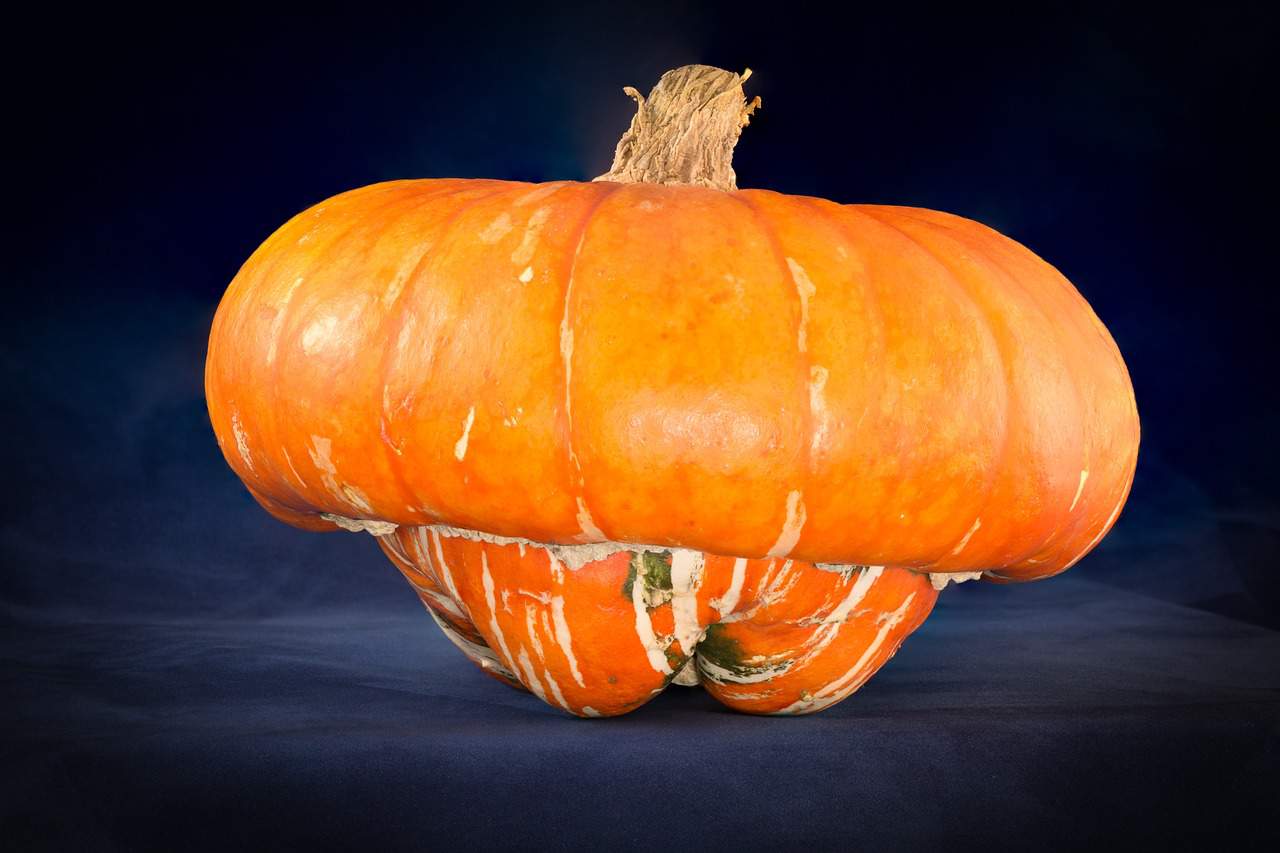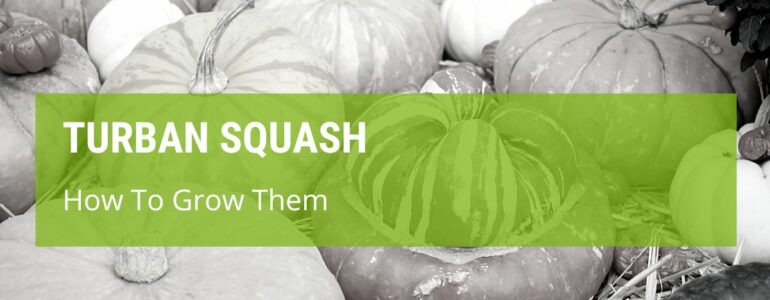You will have probably seen those odd looking squash that look like there’s another squash growing out of them. Did you know they are called turban squash?
If you are suddenly wondering how to grow turban squash, we are here to help! Have a read and find out everything there is to know about this interesting vegetable.
How To Grow Turban Squash

Although they look alarmingly exotic, it is actually not at all hard to grow a turban squash from seed to fruit- they behave a lot like other squash and pumpkins.
- Start the seeds off indoors, by placing a maximum of two seeds into a 10cm pot filled with good quality potting mix.
- Keep them in a warm place and give them plenty of water; they will germinate relatively quickly.
- As the seedlings grow, separate them into larger individual pots and keep them in a warm sunny place until they are stronger.
- “Harden off” the plants by putting them outdoors in their pots when the weather starts to warm up – you can plant out once the last frost is over.
- Because these plants grow quite big and tend to spread out a lot, it’s better to plant them in the ground – but you can leave them in pots if your container is large enough.
- Choose a sunny, sheltered spot for your turban squash babies, and allow a good 30cm between each plant to allow them to spread.
- Keep the plants well watered in the hot summer months, and they will benefit from some organic fertiliser to help them grow to their best ability.
- The plants will grow and flower in the summer, and you will start to see the fruit growing on the vines.
- It is ready to harvest around October/November – it should change colour on the plant and the foliage will die back.
This article is not specific to turban squash, but as the methods of growing squash are very similar, this should be useful.
How Do You Know When Turban Squash Is Ripe?
This plant is fairly easy to judge when it is ripe, like most other types of squash, then you can pick it and decide what to do with it!
As a general rule, once the foliage of the plant has started to die off, this is a good time to think about harvesting your squash.
Another tip is to pick one up (still attached to the plant) and knock on it with your hands – if it sounds hollow, it’s ready.
Many people keep these squash as a decorative item, but they can also be eaten. They are very tricky to carve as Halloween pumpkins though (yes, I speak from experience!)
This enthusiastic chap will show you some good ways of checking whether a squash or pumpkin is ready to be picked:
How Long Does Turban Squash Last?
These squash are very good keepers – it will take them a long time to go rotten and mouldy, and some can last a surprisingly long time.
A whole, uncut turban squash can last for up to 6 months if it is stored in a cool place out of the sunlight.
The top of the squash, where it used to be connected to the vine, will be the first to go – keep an eye out for signs of softness or discolouration.
Once it is cut, the squash will start to deteriorate – you can keep it for 3-4 days in the fridge before you have to think about using it or throwing it away.
You can “cure” your squash to ensure it lasts even longer without needing to be refrigerated – this is a simple and effective method to get more longevity.
- Place the squash outdoors, on a layer of sand, paper or mulch to keep them dry and protected from ground moisture.
- Leave them in the sun for 5-7 days, turning daily, to completely dry and harden the skins.
- You can also use this method indoors – just choose a warm, sunny spot and don’t forget about them!
Some people actually keep these squash for several years as decorative items – this involves treating them to ensure that they don’t start to rot.
How Long To Leave Turban Squash On The Vine?
When your squash are ripe, it’s hard to stop yourself from ripping them straight off the vines and enjoying them!
However, leaving them on the vines for a little longer can actually be beneficial – the last of the plant’s energies will go into the fruit, making it bigger and tastier.
A good rule of thumb is to keep an eye on the foliage – once it has dried up and died, you should definitely lift your squash.
If you leave it on the vine for too long, you run the risk of picking rotten squash – and no one wants that!
Picking too early will mean that your squash has not yet fully developed, meaning it won’t look as good or be as tasty.
What Are The Health Benefits Of Turban Squash?
These squash are fantastic – they’re attractive to look at, delicious to eat – and packed with an array of impressive health benefits too.
Turban squash contain good amounts of potassium and beta carotene (a form of vitamin A.)
You will also find a lot of vitamin C, which is essential for a healthy diet and body, as our bodies do not produce it.
Unsurprisingly, turban squash also contain lots of fibre, which is good for digestive health and an overall feeling of wellness.
Eating healthy foods that contain fibre can help your body to digest properly, plus it can make you feel fuller for longer so that you don’t reach for unhealthy snacks!
Final Words
This is a very attractive squash, and one that is pretty easy to grow, harvest and cook for yourself.
Now that you know how to do it, you should definitely get on with growing some turban squash in your own garden or allotment!







